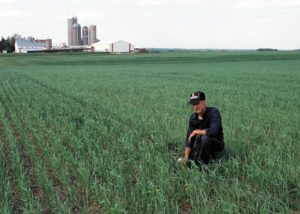Planting cover crops in rotation between cash crops is even more valuable than previously thought, according to a team of agronomists, entomologists, agroecologists, horticulturists and biogeochemists from Penn State’s College of Agricultural Sciences. Research, published in Agricultural Systems, quantified the benefits offered by cover crops across more than 10 ecosystem services.

Benefits included increased carbon and nitrogen in soils, erosion prevention, more mycorrhizal colonization and weed suppression. Researchers simulated a three-year, soybean-wheat-corn rotation with and without cover crops in central Pennsylvania, which presented agroecological conditions broadly representative of the Northeast and mid- Atlantic regions. The cover crop rotation included red clover, frost-seeded into winter wheat in March, and winter rye, planted after corn was harvested in the fall. The research, funded by the U.S. Department of Agriculture, used simulated management practices, including tillage, synthetic fertilizer use and mechanical weed control.
This report appears in the May 2014 issue of Acres U.S.A.

